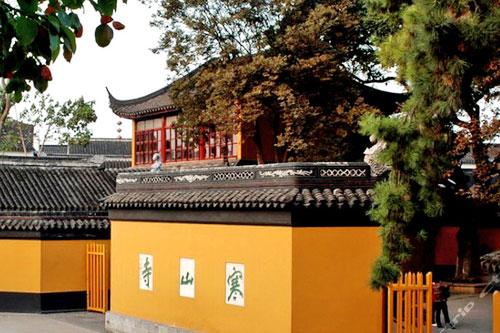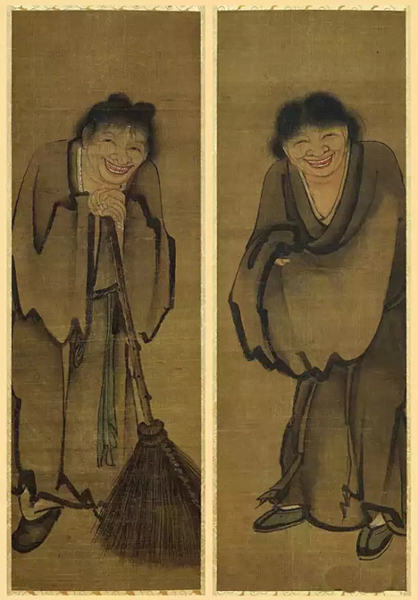
Portrait of Chinese poet Hanshan
Japanese New Year’s Eve is celebrated on December 31 and the day is called Omisoka, meaning “leaving the bad luck to the past.” When it is time to usher in the New Year, all Japanese monasteries and shrines hold a bell-ringing ceremony while the bell must be struck 108 times. Few people may know that the custom has something to do with a Chinese poem—Mooring by Maple Bridge at Night.
The crows at moonset cry, streaking the frosty sky;
Facing dim fishing boats neath maples, sad I lie.
Beyond the city wall, from Temple of Cold Hill,
Bells break the ship-borne roamer’s dream in midnight still. (Translated by Xu Yuanchong)

People in Japan celebrate Omisoka on Dec. 31.
Hanshan Temple
In Japan, the poem written by Tang Dynasty poet Zhang Ji is so popular that it has been included in school textbooks. People in Japan have been familiar with it since their childhood. What’s more, in Tokyo, there is a Hanshan Temple (literally “Cold Hill Temple”) where the poem is inscribed on a stone tablet.

Hanshan Temple in Suzhou, China
Mooring by Maple Bridge at Night and Hanshan Temple has become a cultural symbol of Sino-Japanese exchanges. During a cultural exchange event between China and Japan in 2005, Jackie Chan and Ai Fukuhara jointly struck a bell replica of the temple in Suzhou, a city in South China. Each year, on New Year's Eve and New Year’s Day, many Japanese make all the way to the Chinese city to listen to the ringing of the bell at Hanshan Temple.

Jackie Chan and Ai Fukuhara
In ancient China, Buddhist monasteries rang bells in the morning and beat drums at night to tell the time. In Sichuan’s Langzhong, the tradition has been passed down. On New Year’s Eve, people ring bells at 11 o’clock instead of at midnight. In Buddhism, people have 108 afflictions, and it is believed by striking the temple bells 108 times on New Year’s Eve, all the afflictions in the past year can be removed. As Chinese culture and Buddhism spread to Japan in the Tang Dynasty, the New Year custom was introduced to its neighboring country.
Poet Hanshan and his bosom friend Shide
The popularity of the Chinese poem Mooring by Maple Bridge at Night and Hanshan Temple among the Japanese has to be attributed to another poet: Hanshan. Although his name is lesser known by many Chinese people, Hanshan is a legendary figure in foreign countries whose reputation is far greater than poets Li Bai and Du Fu. With an odd temper, the Chinese monk was often regarded as mad by his fellows. Wearing a humble appearance, he was well-learned and was a good poet.
During his lifetime, Hanshan had a bosom friend named Shide, who later became an important figure in the spread of Chinese Buddhism and culture in Japan. Both Shide and Hanshan became well known in the country. Hanshan’s poetry anthology with Shide’s annotation is also a classic in Japanese literature.

Portrait of Hanshan (right) and Shide
Cultural influence is mutual. As Japanese scholars came to China to look for the poetry and traces of Hanshan, Chinese people began to turn their eyes to the legendary poet.
Later, the temple in the town of Fengqiao (Maple Bridge) in Suzhou where Hanshan spent his last days was renamed Hanshan Temple. That explains why Hanshan Temple and Mooring by Maple Bridge at Night went popular in Japan.
Hanshan became the Chinese who had the greatest influence on Japanese culture. Not only his poems but also his thought exerted a far-reaching influence on the country’s politics, society, religion, arts, aesthetics, business and other fields. It is no exaggeration that his influence on Japan is still alive to date.
